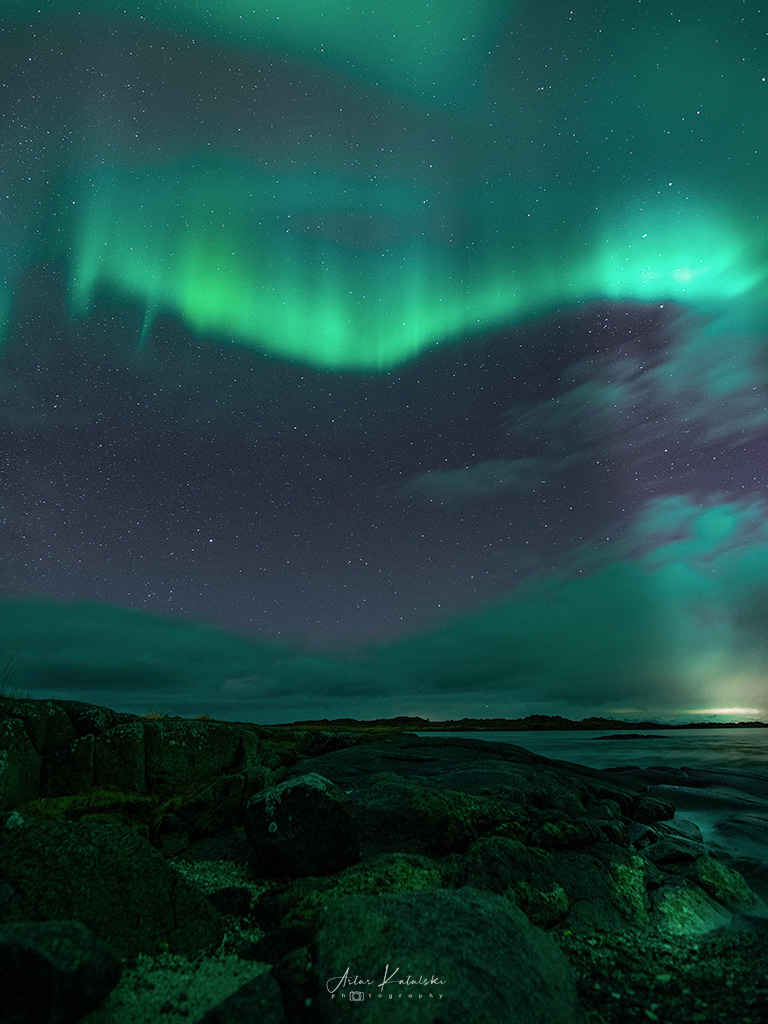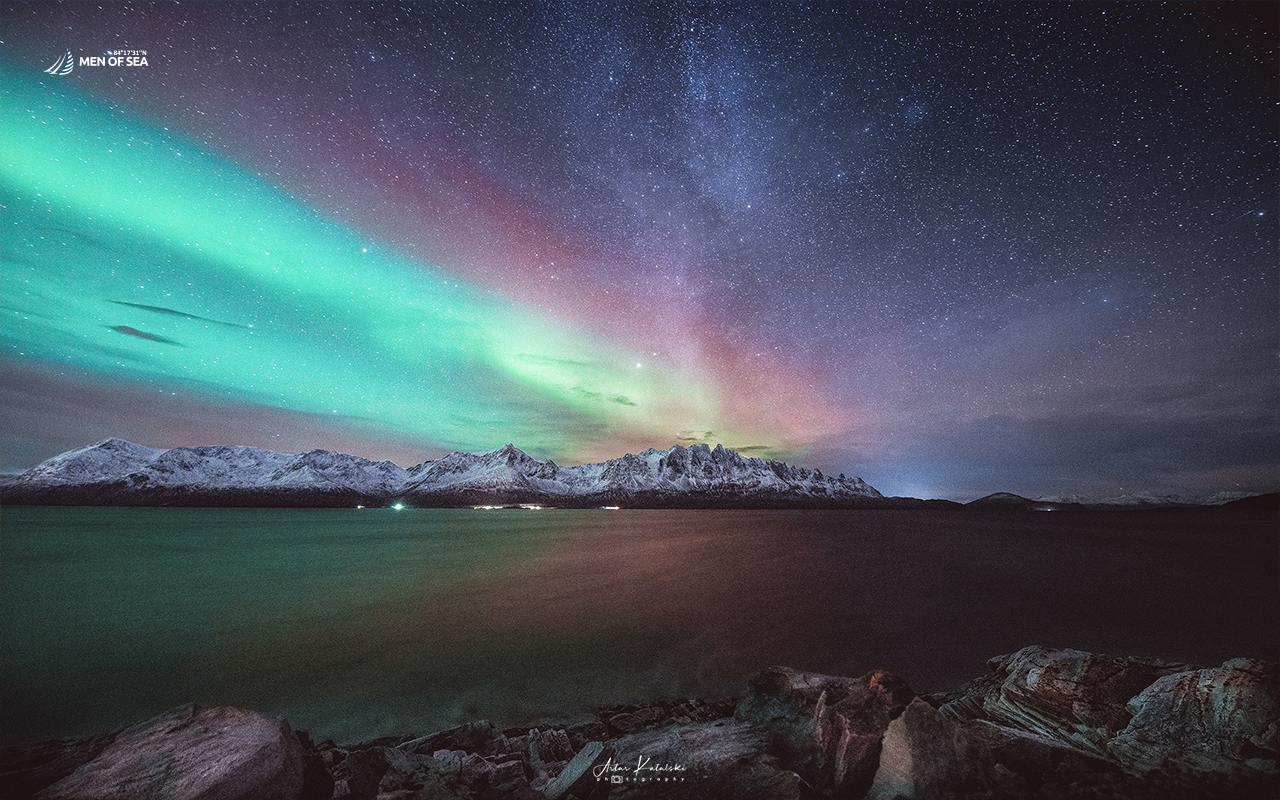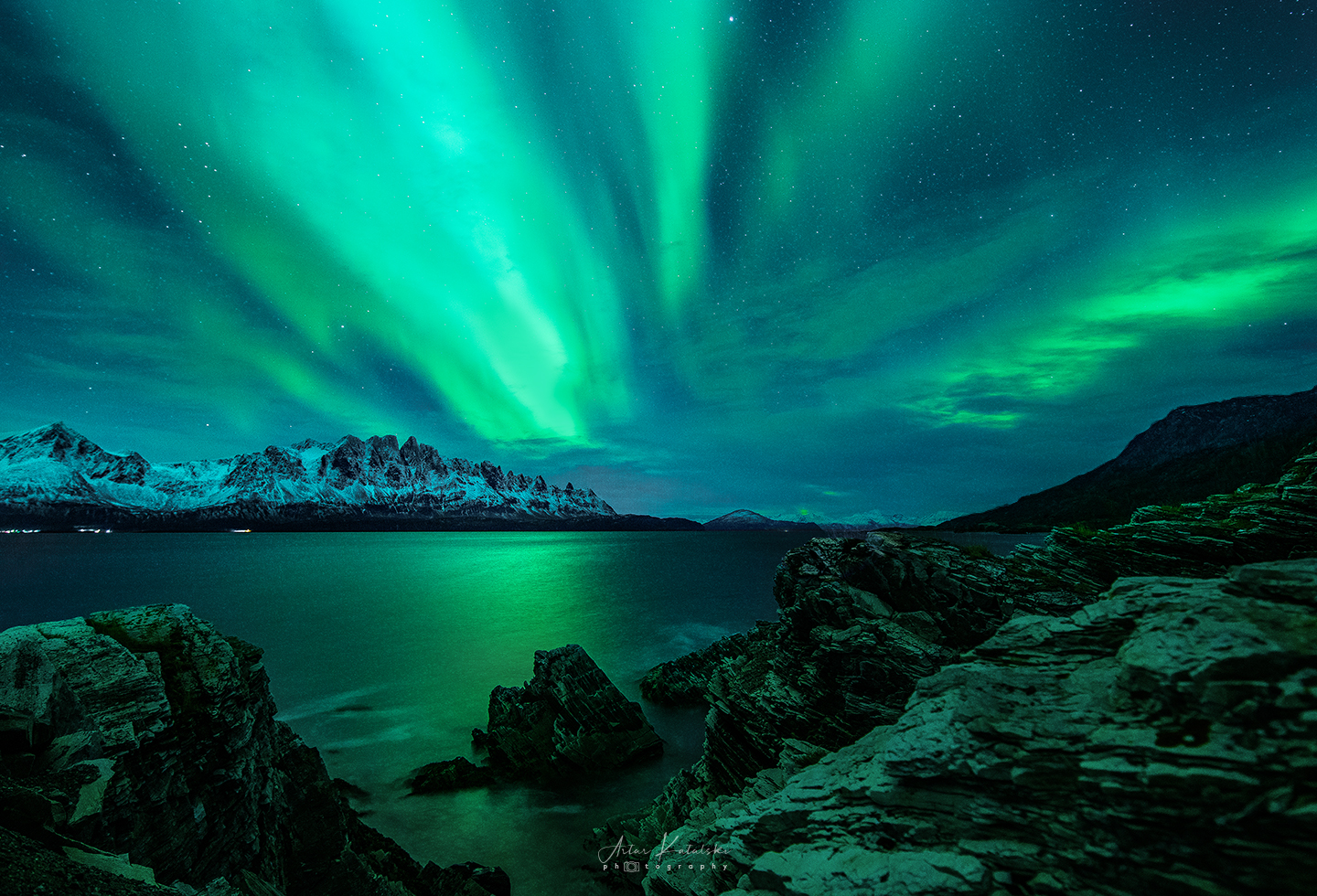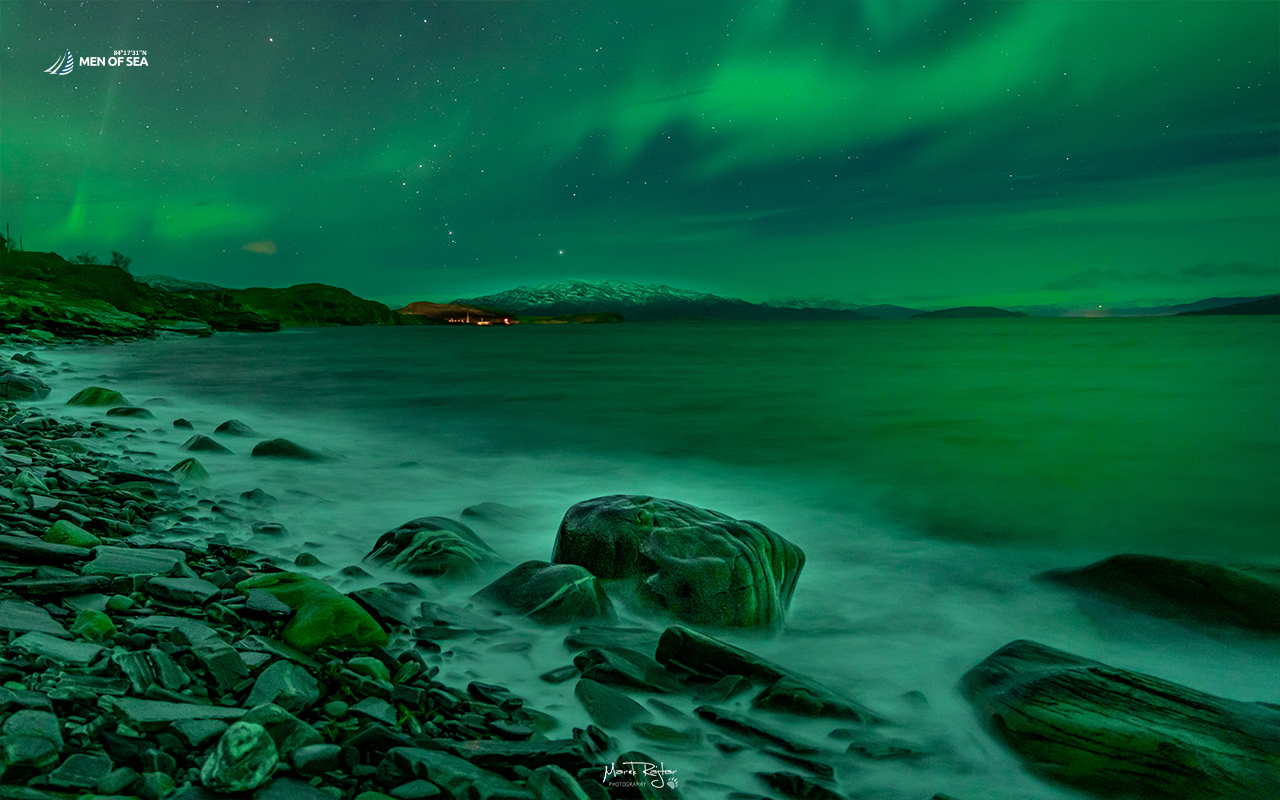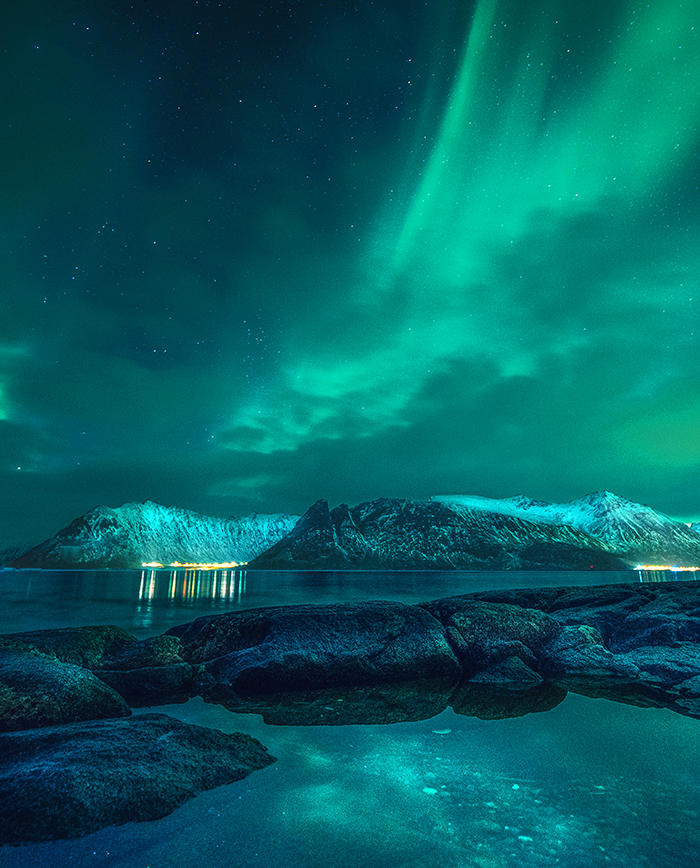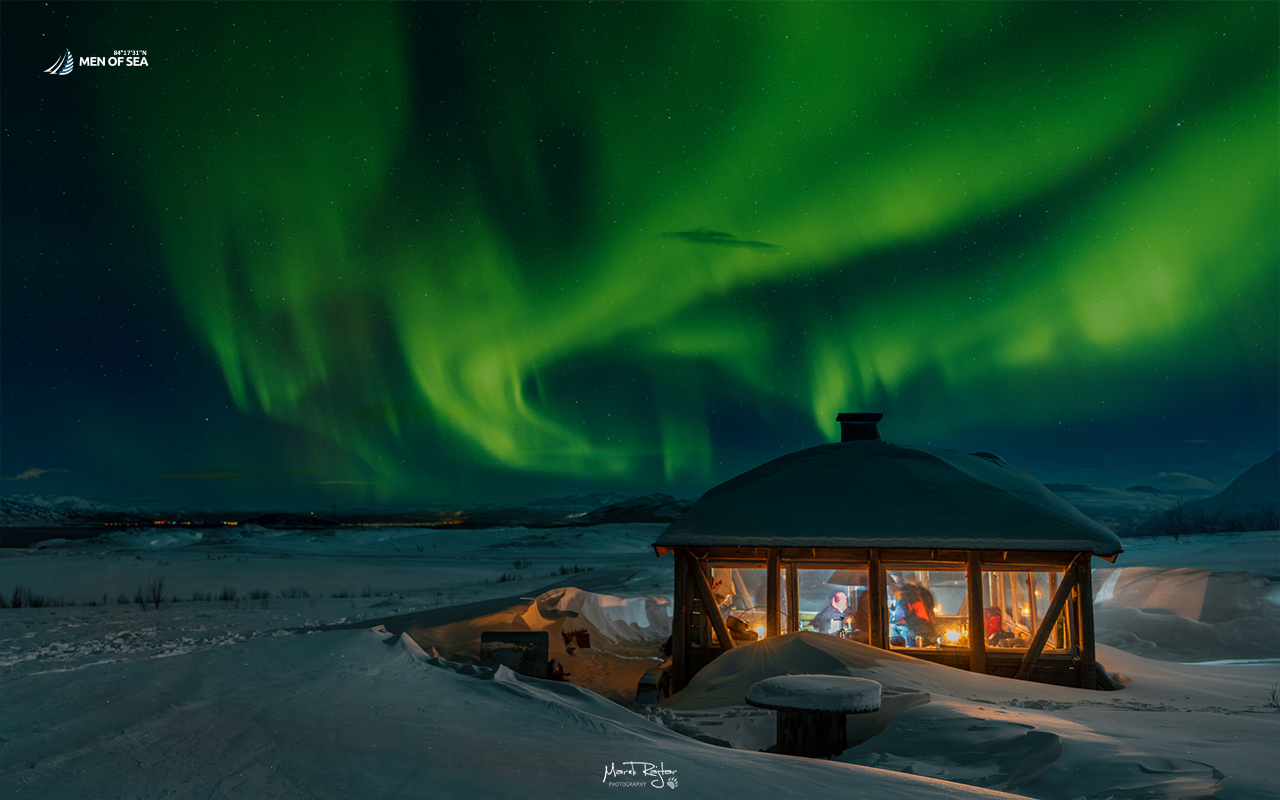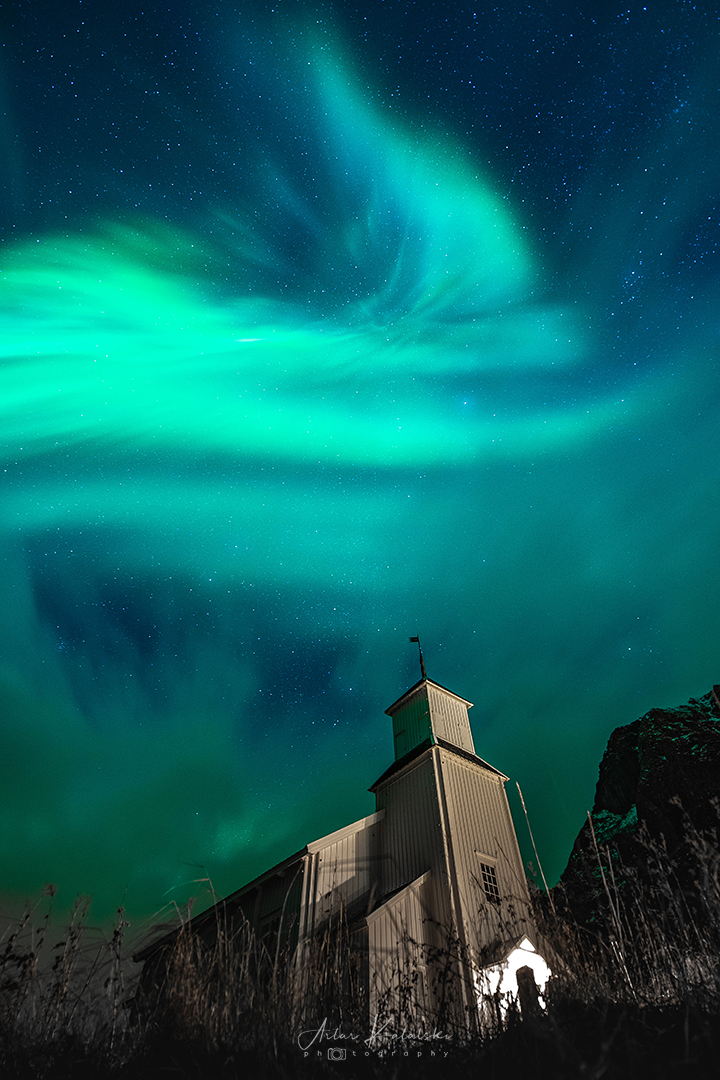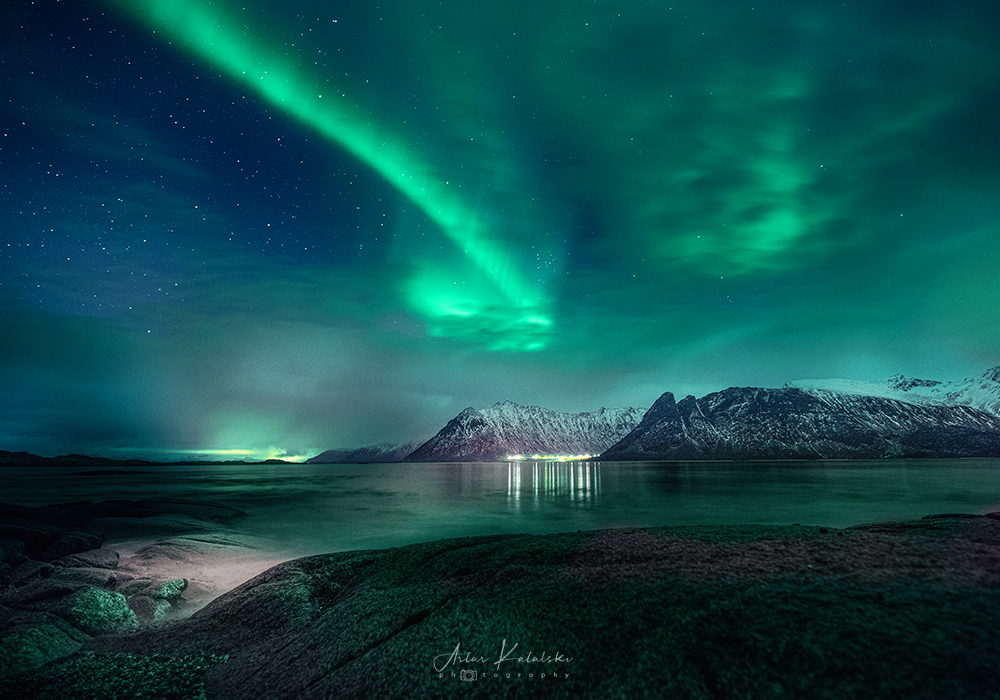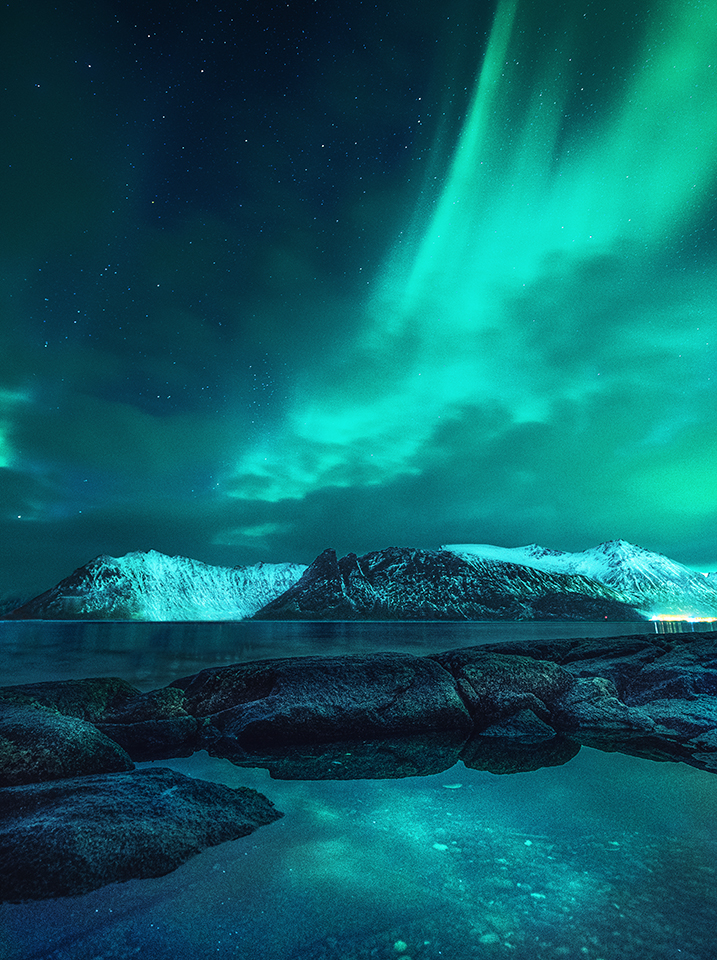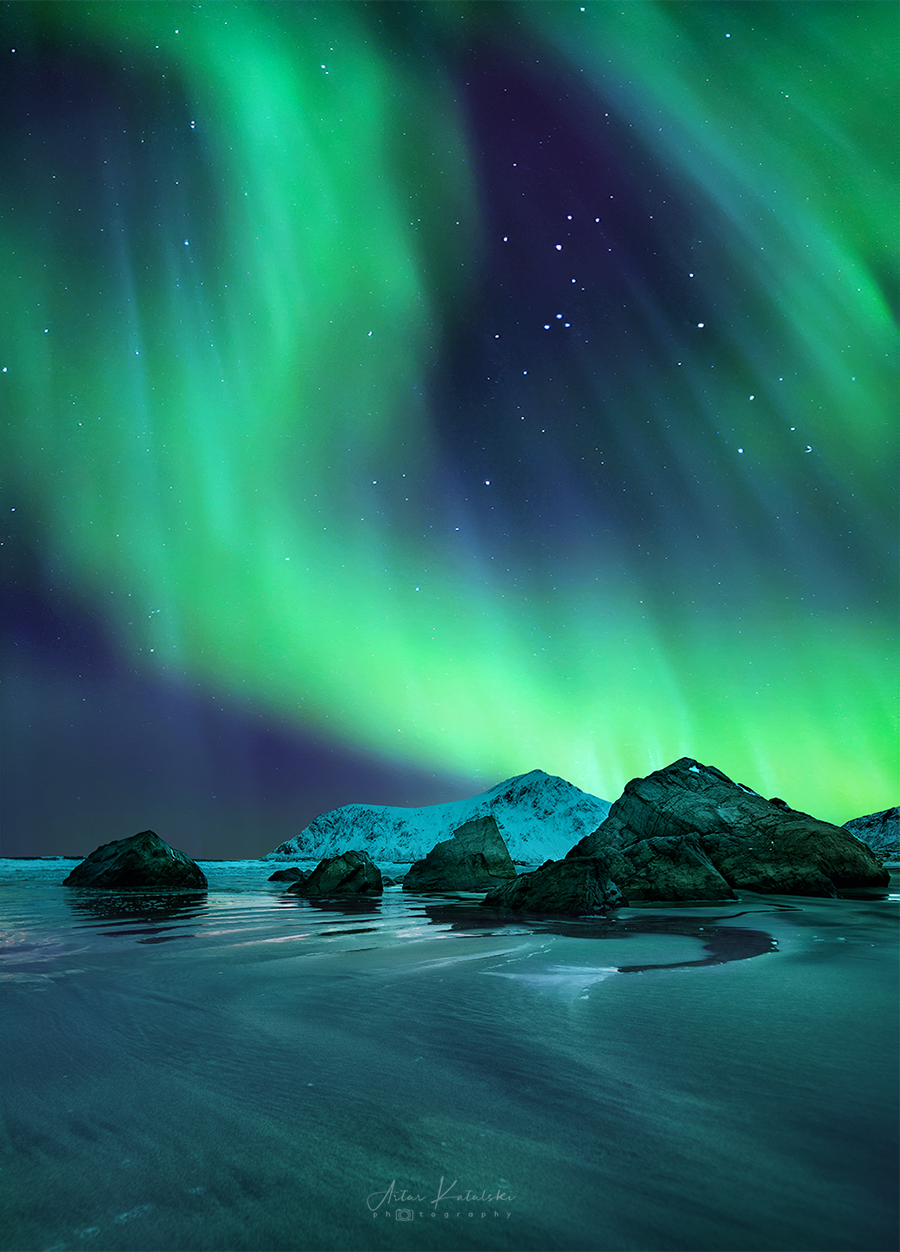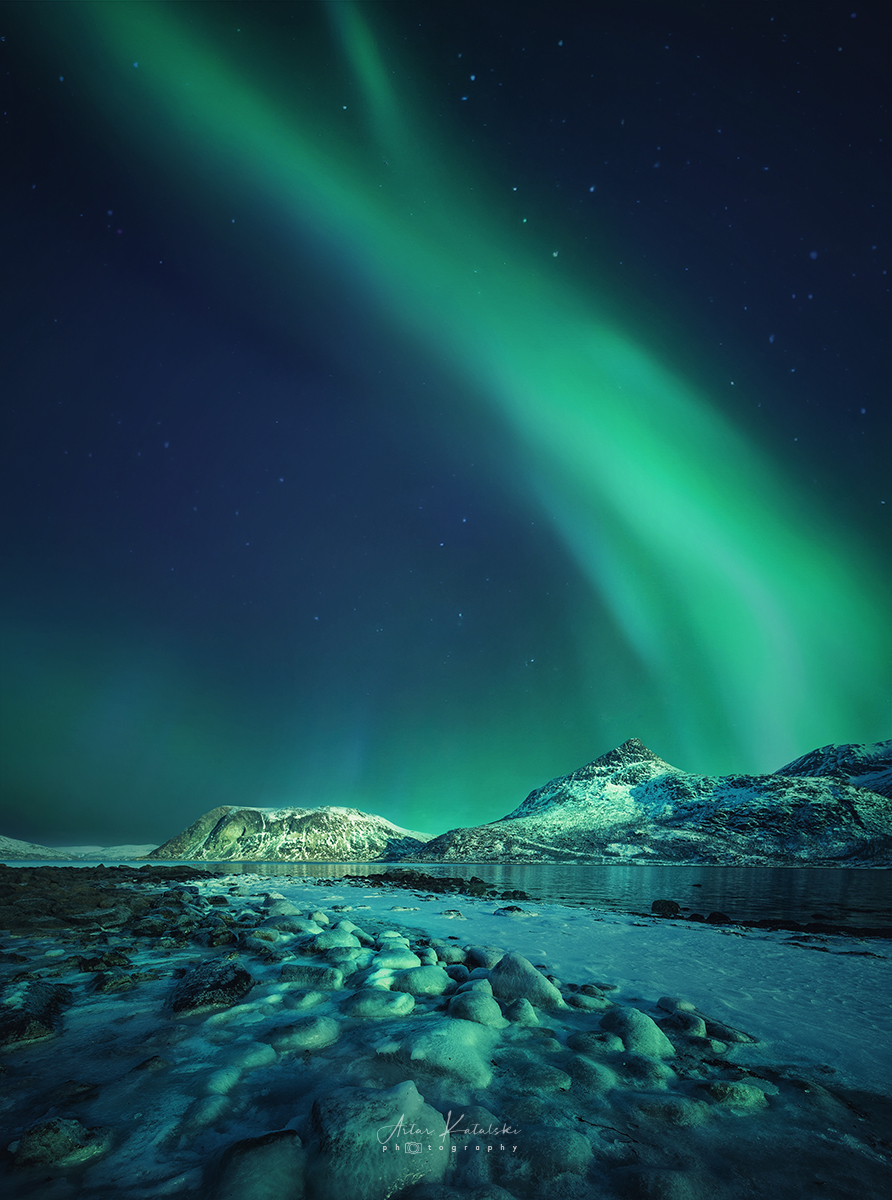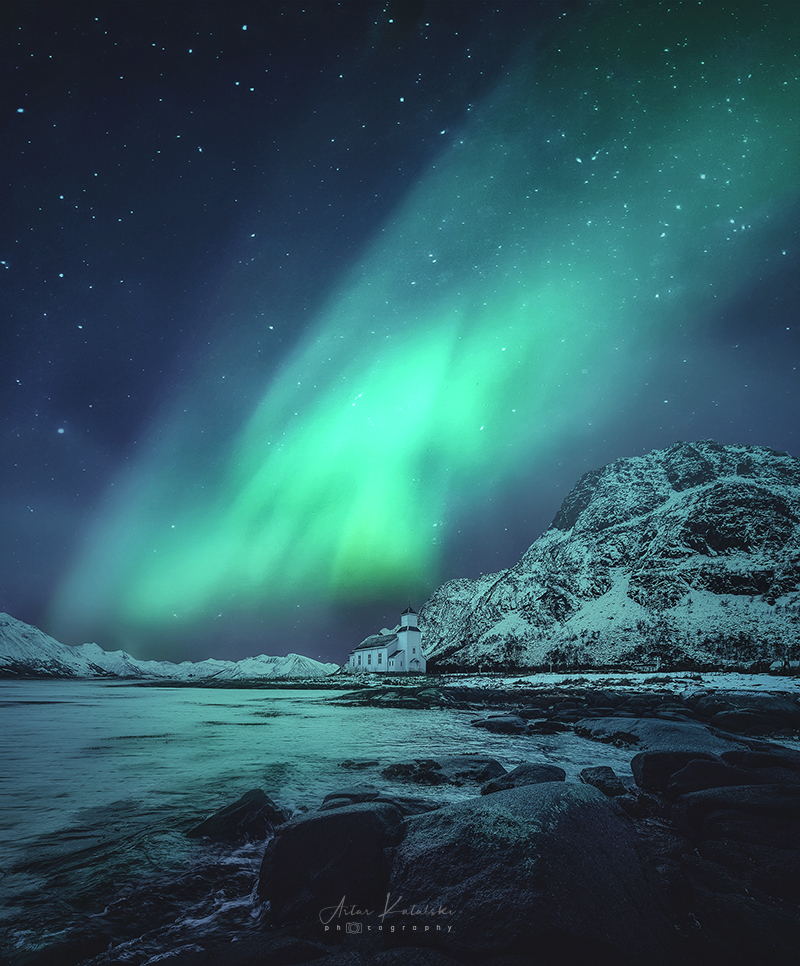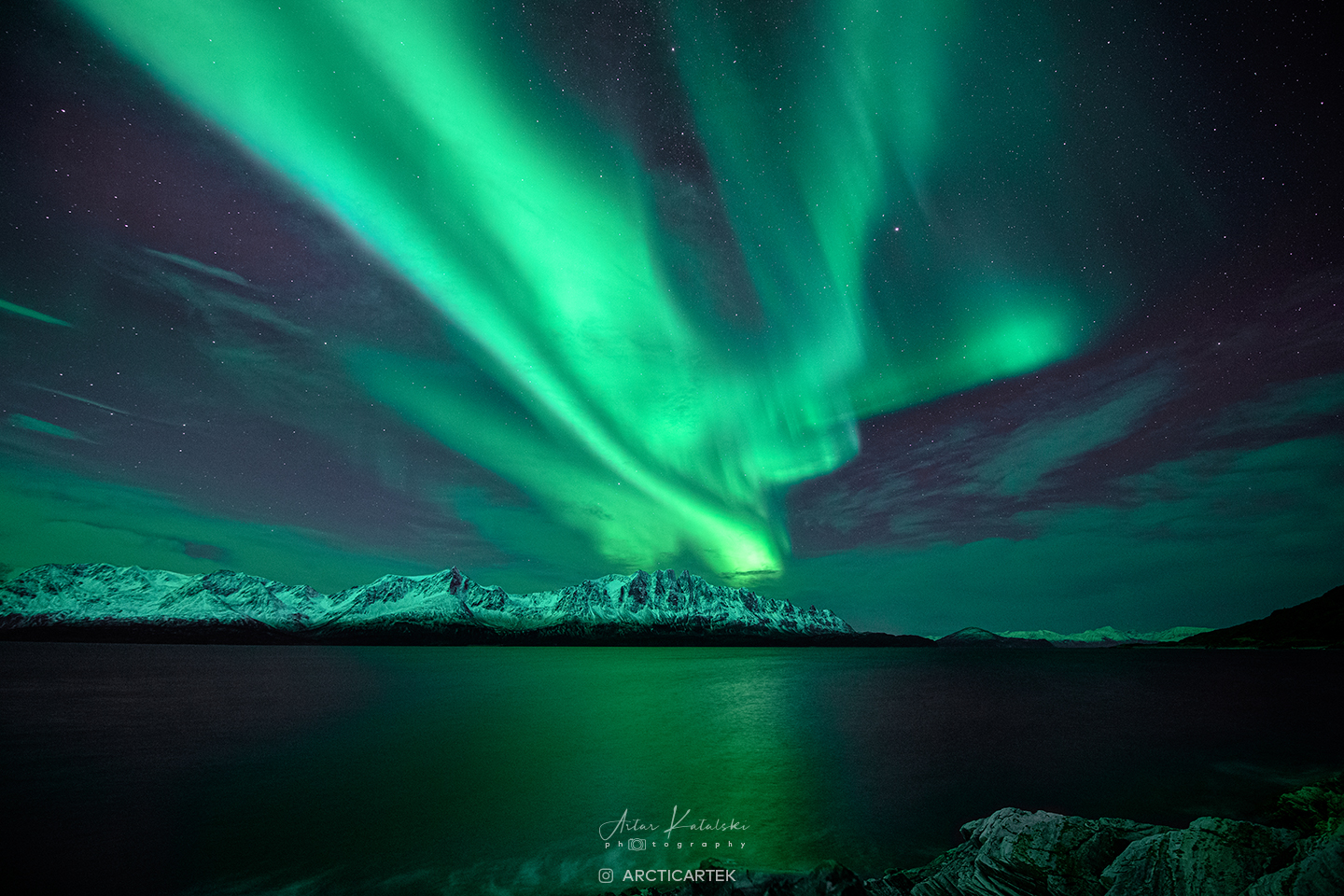
AURORA BOREALIS
BACKGROUND INFORMATION
The Northern Lights, also known as the Aurora Borealis, is a natural light phenomenon occurring in the sky in the ionosphere of the northern hemisphere. Its origin is related to solar wind particles that interact with the Earth’s magnetic field. The sun constantly emits a stream of charged particles which, near the earth, are deflected by the Earth’s magnetic field and pulled towards the poles, where they influence the atoms and result in the creation of beautiful, shimmering lights of various colours.
Most auroras occur between September and March in polar regions. Northern Norway, Tromsø area, Lofoten, Nordkapp and Svalbard are the best places to observe them.
A SPECTACULAR PHENOMENON
The colours of auroras depend on the gas and the altitude at which they occur. Oxygen shines in red and green, while nitrogen shines in purple and maroon. The collision of particles with a mixture of nitrogen and oxygen gives a yellow colour. The lighter gases – hydrogen and helium – glow in blue and violet. The most common colour observed is white, which is photographed in green.
Depending on the intensity, the aurora borealis can take a form of a stream stretched across the sky, an arc, a curtain or dynamic bursts that flare up like fireworks across the sky. We can then observe it ‘dancing’ or ‘creating curtains’.
In Norwegian beliefs, the aurora borealis is not associated with anything good, it invokes ancestral spirits or is an expression of hostile forces, such as mythical dragons.
The Aurora Borealis attracts crowds of tourists to the Tromsø area.
During our “Auroras and Whales” trips, we travel by yacht or car to wild places with little artificial light, but with beautiful landscapes, where we can admire this wonderful phenomenon in a small group and find time to take unforgettable photos.
Trips connected with AURORA BOREALIS

Magical Lofoten One Way Bodø – Tromsø

11 dni
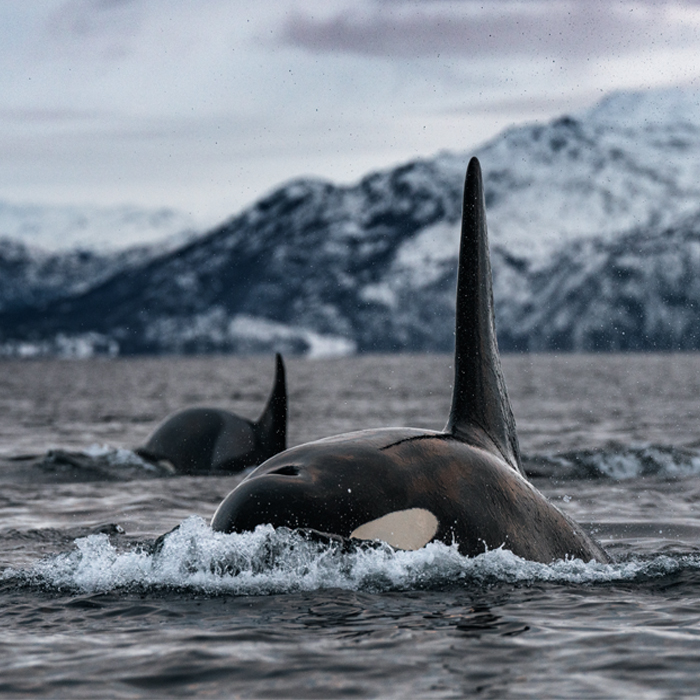
Auroras and Whales 10-days

10 dni
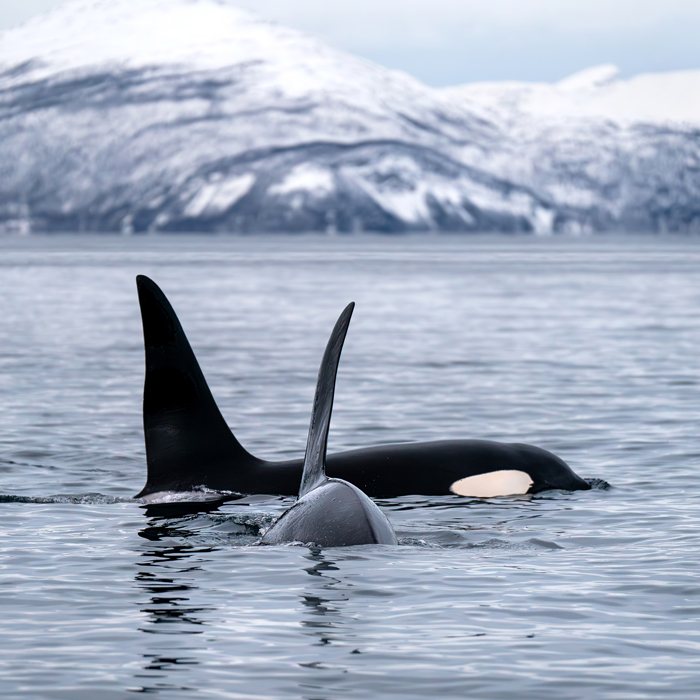
Auroras and Whales #001

8 dni

Auroras and Whales #002

8 dni

Auroras and Whales #004

8 dni

Auroras and Whales #006

8 dni

Auroras and Whales #008

8 dni
